DEWOITINE
D.520C-1
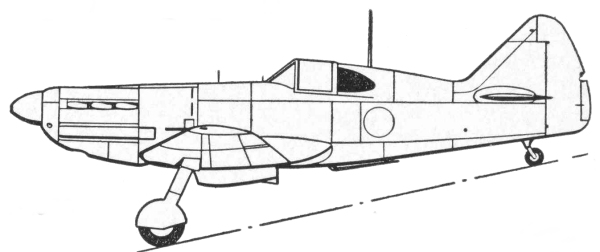
The D.520 was designed by a team lead by Emile Dewoitine at the Société Nationale de Constructions Aéronautiques du Midi (S.N.C.A.) to meet an official specification issued in 1937 and calling for a single seat fighter eventually to be equipped with the 1,100 h.p. Hispano-suiza 12Y-51 engine. The first to fly was the 520-01 with an 890 h.p. engine, a two bladed prop and leading edge slots. During trials it was found that the slots were not needed and that the radiators, which were buried in the wings limited the maximum speed to 298 m.p.h. So when the 520-02 flew in January of 1939, it featured a ventral radiator and in order to rectify some instability the vertical tail surfaces were enlarged. This aircraft on February 8, 1939 obtained a speed of 512 m.p.h. in a dive and two days later was ferried to the Centred'Essais du Matériel Aérien (CEMA) where it joined the third prototype the 520-03 which had redesigned vertical tail surfaces.
CEMA trials were completed satisfactorily at the beginning of March 1939 and a contract for 200 machine was placed with S.N.C.A. An order for an additional 400 D.520's was placed in June 1939. The first true production machine was powered by a 910 h.p. HS 12Y-45 engine with a Szydlowski supercharger and a Ratier-1606M electric propeller. Armament consisted of an engine mounted 20-mm cannon and four belt fed 7.5-mm guns. A tail wheel was fitted and the windscreen incorporated an optically flat panel.
The Groupe de Chasse I/3 was the first unit to receive the D.520 at it proved extremely popular with service pilots who enjoyed the sensitiveness of its controls , the simplicity of its instrument panel and the ease at which it recovered from a spin. By May 1940 S.N.C.A. had attained a monthly output rate of 100 machine but by May 10th, only CG I/3 was operational on the D.520. However, GC II/# converted to the new fighter between May 9th and 18th and was soon joined the combat. These units were joined by GC III/3, GC III/6 and GC II/7 before the June 25,1940 armistice, and the D.520's were credited with 114 confirmed "kills" and 39 "probables". A naval unit, 1° Flottille de Chasse, was reequipped with the D.520 and joined combat before the armistice and GC II/6 and GC III/7 had converted to the type but were too late to see action. Between the 18th and 20th of June, GC I/3, II/3, III/3, III/6, and II/7 flew their aircraft to North Africa. By June 24, 1940 411 D.520 had left the assembly line. By the Spring of 1941, the Vichy Air Force had adopted the D.520 as its standard fighter and the German Armistice Control Commission had authorized the resumption of D.520 production. In 1942, the D.520 No. 465 was flown with an improved H.S12Y-45 engine, a modified radiator and inboard hinged wheel doors, and by October 1942, nine Vichy Groupes de Chasse were operating the D.520, as well as 1° Flottille de Chasse. These saw some action against British forces in the Levant and had escorted Vichy bombers in an attack on Gibraltar on September 2, 1940.
With the German invasion of Unoccupied France in November 1942 and the disbanding of the French armed forces, the D.520s were seized by the Luftwaffe. These equipped two fighter training units, J.G. 103 and 105. They also supplied the Regia Aeronautica with 60 machines which were used primarily as fighter trainers by Gruppi 13, 22, 24 and 167 and issuing about 100 to the Bulgarian air Force and others to the Romanian Air Force. Of the Axis countries, only Bulgaria and Romania employed them operationally.
When the German forces evacuated Toulouse on August 22, 1944 former Armée de l'aire personnel seized all airworthy D.520s and those undergoing overhaul and on September 16th formed Groupe de Chasse I/8 under Marcel Doret, strafing the retreating German columns and attacking German pockets at Royan, Pointe de Grave, Rochefort and Oléron. One hundred and eighty D.520 fighters had been produced subsequent to the resumption of production after the armistice bringing the total production to 610 machines.
The Kit
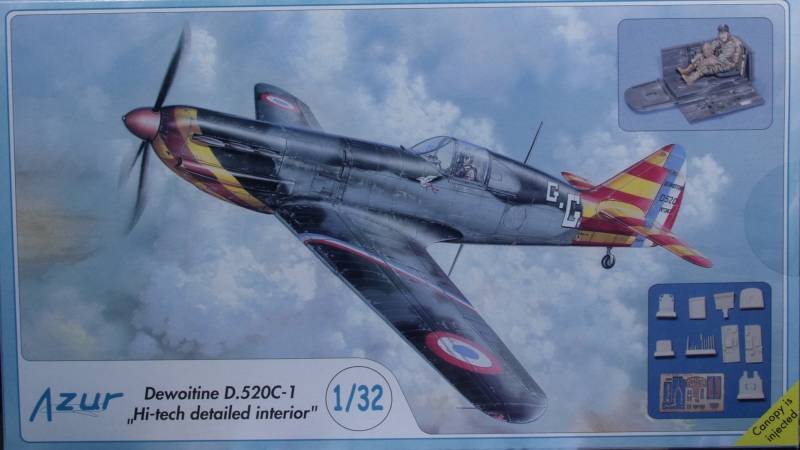
The
Azur D.520C-1 comes in a
small box for a 1/32 scale kit and it is one of those annoying and
inconvienient end open boxes. It does have some nice artwork on the
box top
as well as a couple inset photos of included resin parts. This was the
second issue of this kit by Azur, the first did not include the resin
parts or the pilot so if you are interested in having a nicely
detailed
interior, I would suggest looking for this specific "Hi-tech" kit.
Azur, a French
company, does the kit design which in then tooled and molded by MPM in
the Czech Republic.
The box contains three sprues molded in light
gray which are enclosed in a pressure adhesive sealed bag, which
allows the
bag to be resealed if desired. Inside the bag are three small zip lock
bags with the resin parts and the decals and PE sealed in another bag.
The clear sprue did not have its own bag and was left to suffer any
damages that might occur during shipping. Fortunately it survived with
only some minor abrasions which a coat of future should hide. The
molding on the parts is pretty much the standard these days for
limited
run kits with a light amount of flash and some parts with rather heavy
attachment points. The surface has a glossy finish and the surface
detail is recessed, fine and uniform. There is some rivet and other
surface detail that is recessed or raised as appropriate. The control
surfaces are fixed except for the flaps which are separate and can be
positioned up or down. The fabric detail is very restrained and should
please most. I did not find any sink holes in any of the parts, there
were a couple very minor blemishes that should be easily fixed with a
little sanding. On the bottom wing the demarcation line for the
forward
part of the aileron was partially filled in on one side. This should
be
easy to fix with a scribing tool. There is an injected interior
supplied for
those adverse to working with resin parts but the resin looks so much
better. There are two different spinners for the propeller and the
blades are separate. There are 70 parts molded in gray but if you use
the Resin parts, a number of them won't be used. Photos of the sprues
are below.
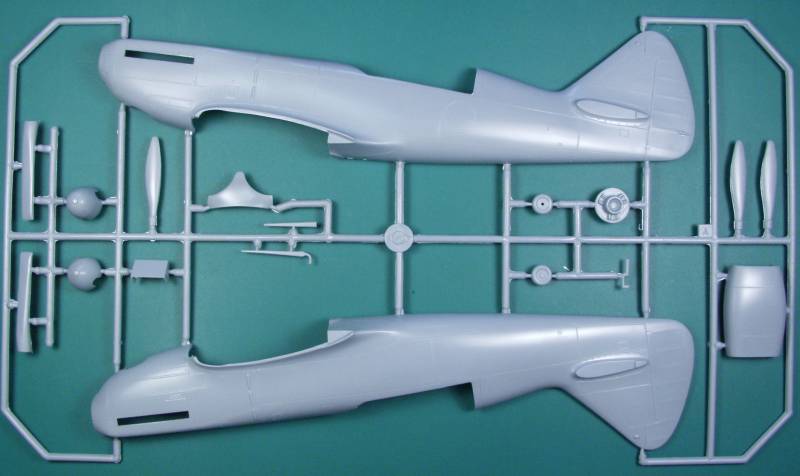
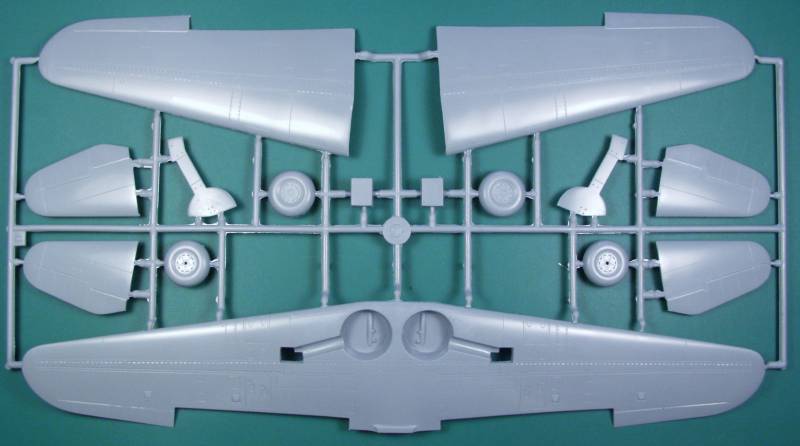
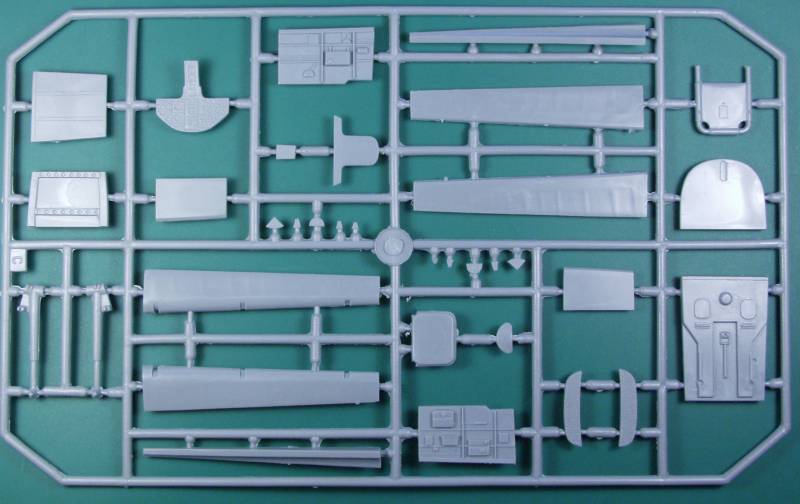
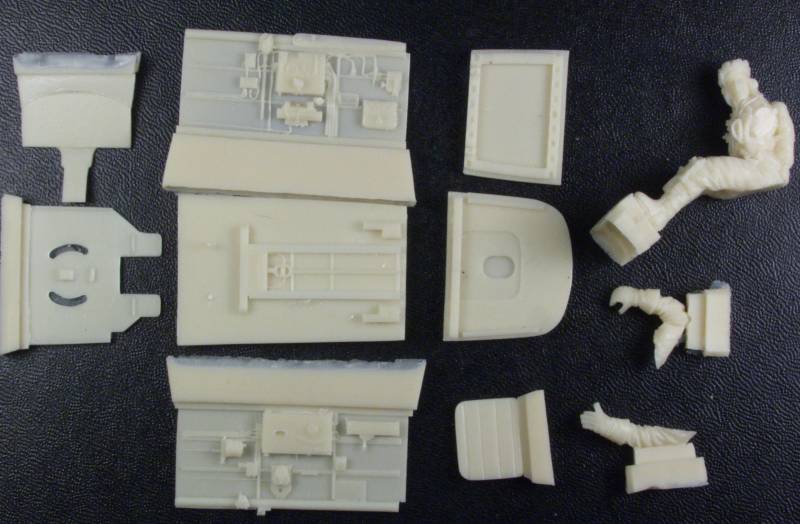
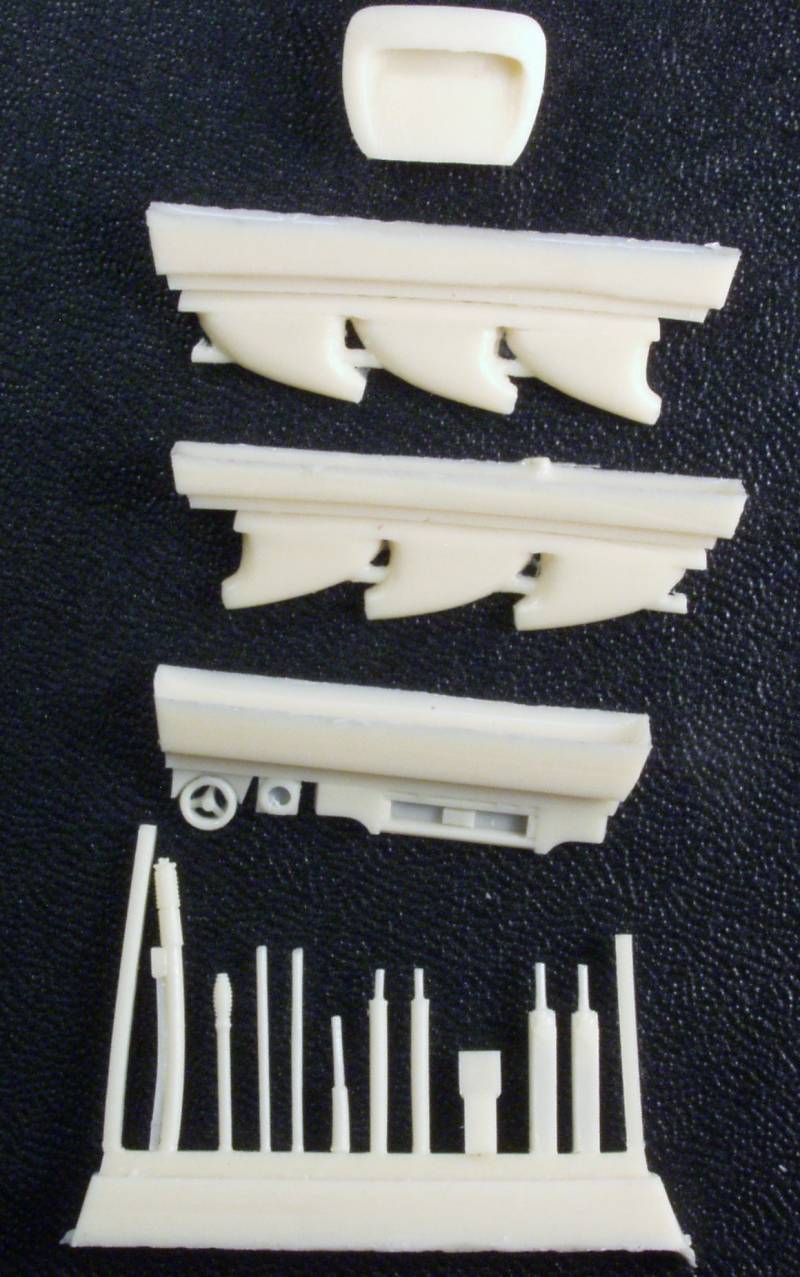
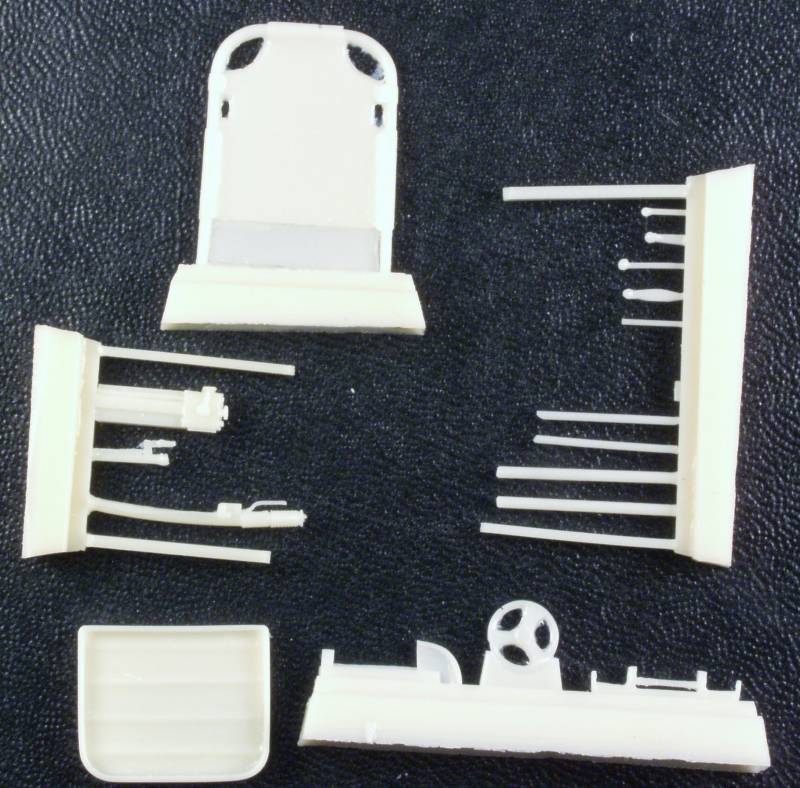
The clear part, the canopy is one piece although it could be cut to be displayed open. It is clear and thin and should look great when dipped in Future.
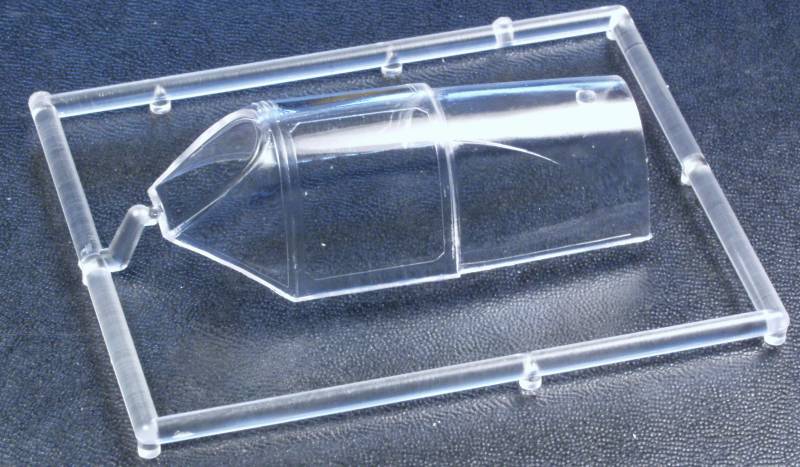
Photo etched parts supplied with the kit include the instrument panel with a film for the instruments, a shoulder harness and seat belt, grills for the various coolers and a couple of other detail parts. See below.
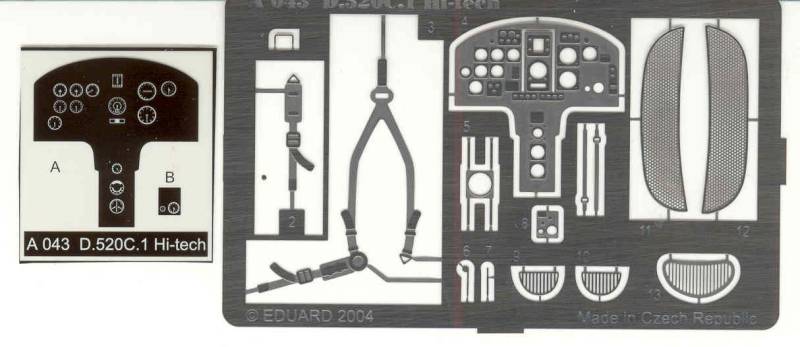
The decals are only marked Azur so no clue as to who printed them but they are nicely registered, have minimum excess film, and with the exception of the yellow, appear to be opaque. The tail data is separate for those who prefer to paint the tail colors on. Markings are provided for provided for three aircraft, one in clown makeup at two different times and the other flown by Marcel Doret in September of 1944. See below.
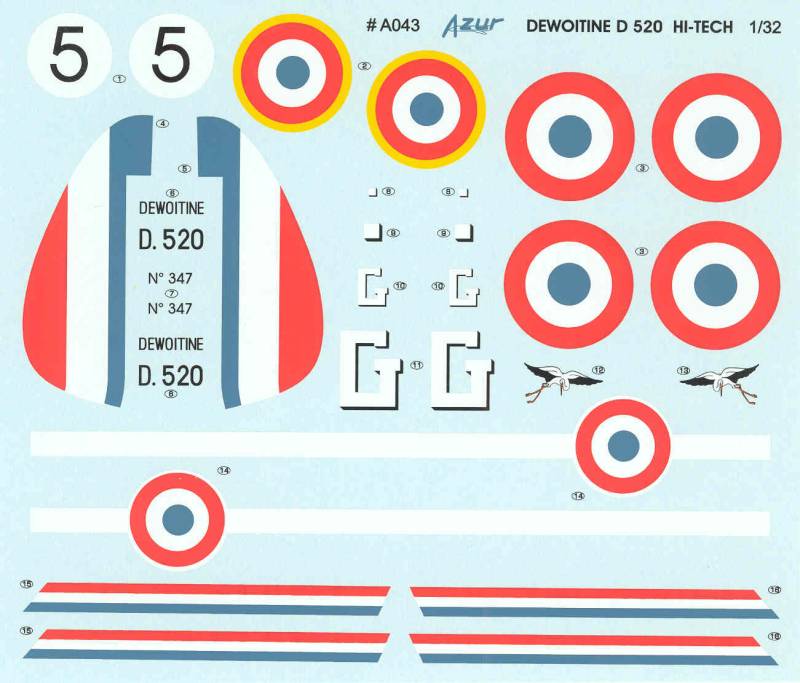
The instructions will look familiar to builders of other MPM kits, a small folded booklet with ten pages. Page one has history in four languages, page two is a parts map, pages three through seven are assembly steps and pages eight through ten are painting and marking diagrams
After Market Goodies
While the kit is pretty comprehensive and detailed I decided to get a detailing set from Contact Resine (CK 320001). I know, AMS. I believe the detail set came out before Azur released the "High Tech" kit so it contains a lot of the same parts. The one thing it does provide different is an entire replacement nose from the leading edge of the wing forward. Yes, this will require some serious work to fit but it is an absolutely gorgeous casting with much finer detail and includes some detail not on the kit parts. The set also includes a replacement rudder, horizontal stabilizers with separate elevators, a replacement oil cooler, spinners and propeller blades. It also includes cockpit side walls, floor and seat which are even finer detailed than the kit resin. It also includes a vacu-formed canopy which is very clear and nice and also easier to cut if you want an open canopy and for reasons beyond me they also include the cockpit side walls on white metal along with white metal gear struts and supports. The metal cockpit sides are nice but no where near as nice as the resin parts. Finally there is a fret of photo-etch that includes the instrument panel with a film for instruments that looks even nicer than the kit supplied PE as well as a harness, gear doors and some PE levers for the cockpit. The set comes packed in a compact sturdy box with bubble pack to protect the parts and a nice one page instruction sheet printed on both sides in color showing where are the bit go. Altogether a very nice set that should move the kit to the next level. Please note that not only is the set not for the faint of heart but costs more than what I paid for the kit itself. I don't remember exactly what I paid for it but the box was marked 65 Euros. It also can be some what difficult to find. I ended up getting mine off eBay. See photos below.
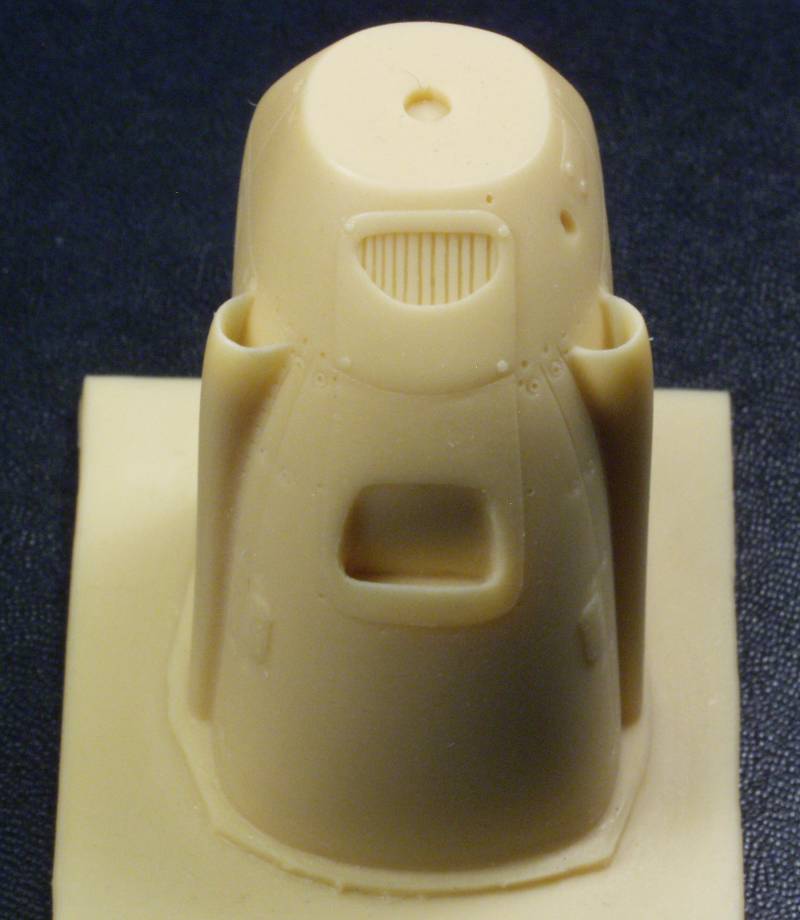
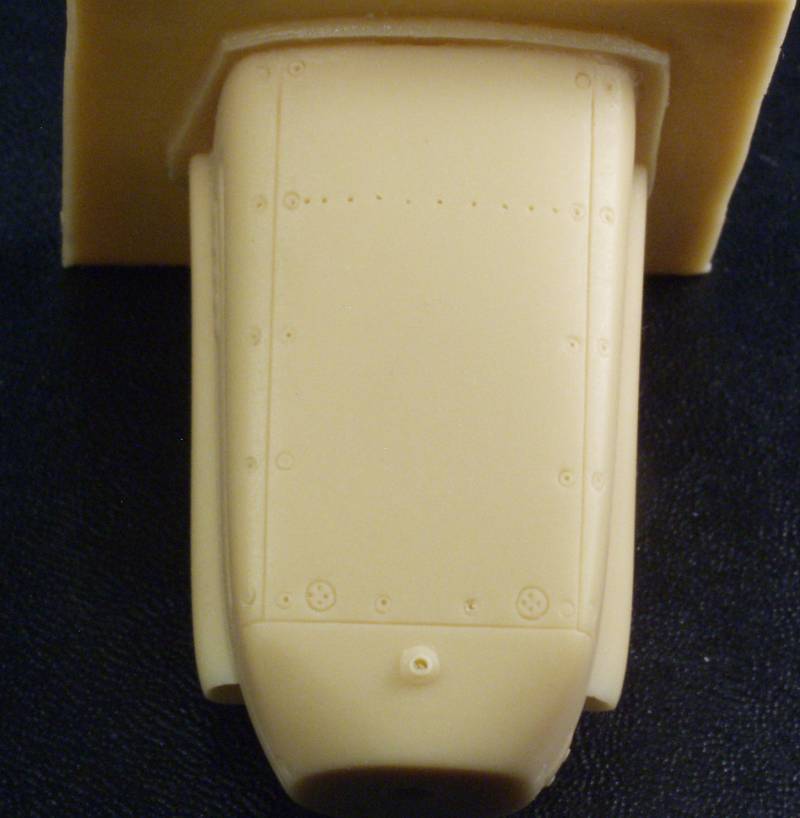
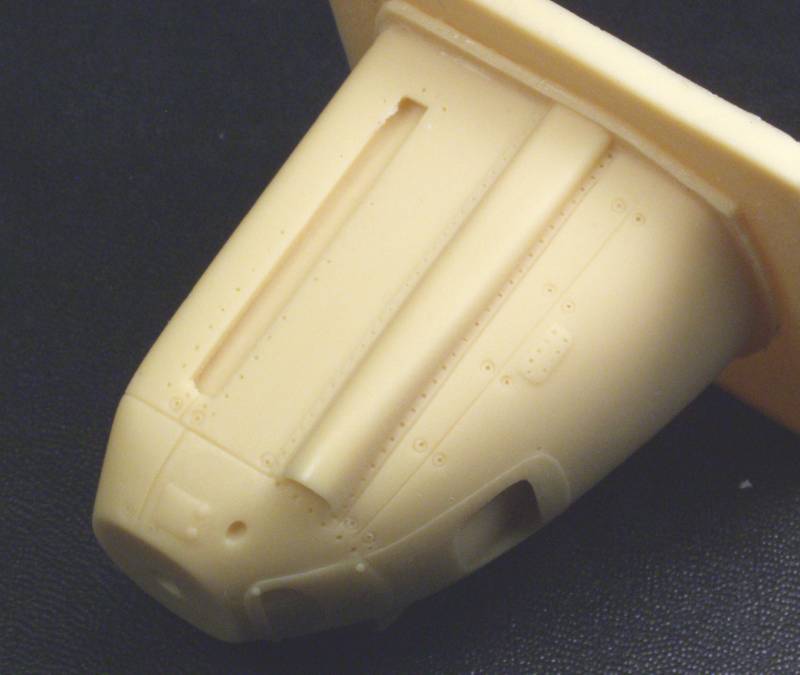
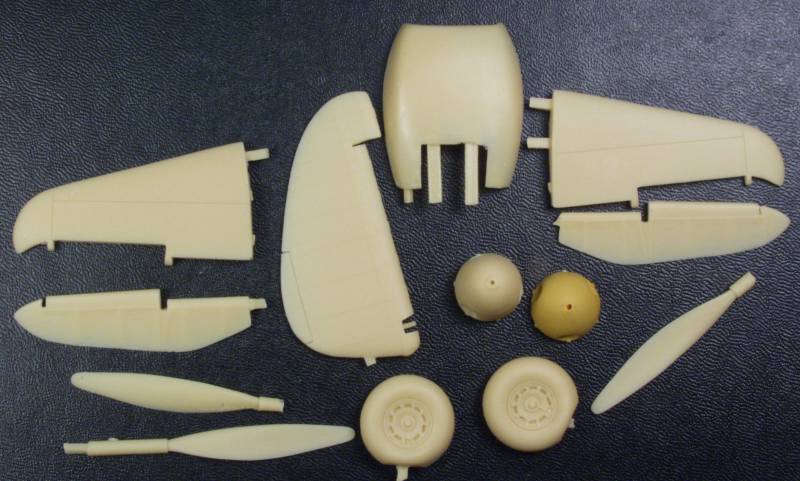
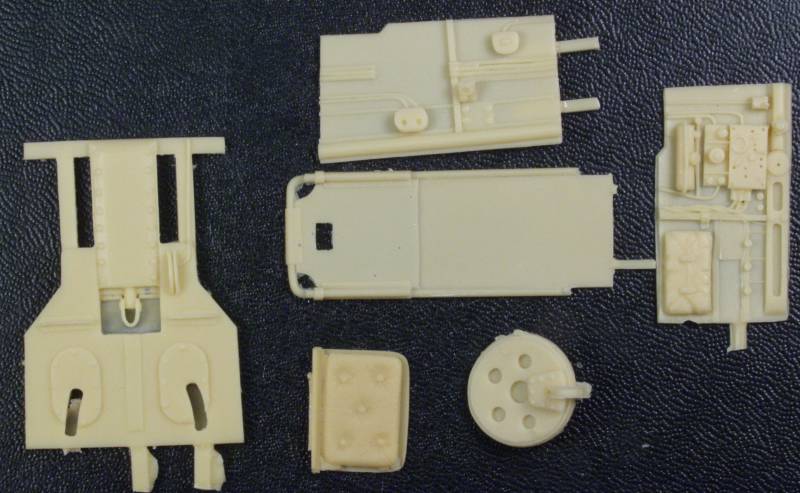
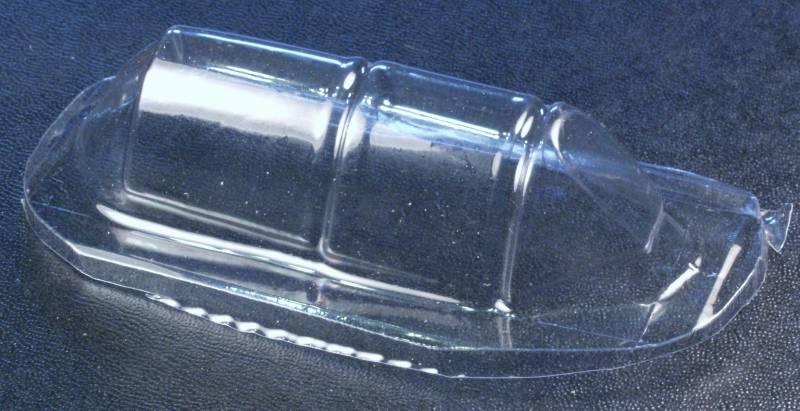
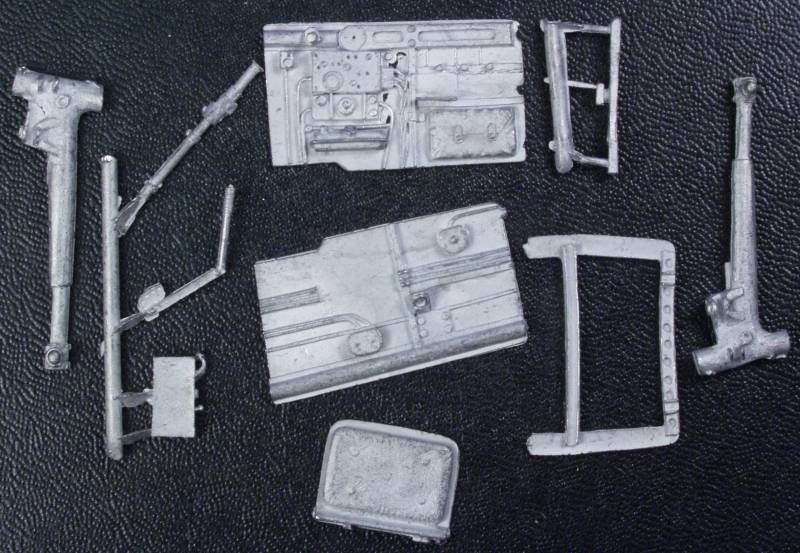
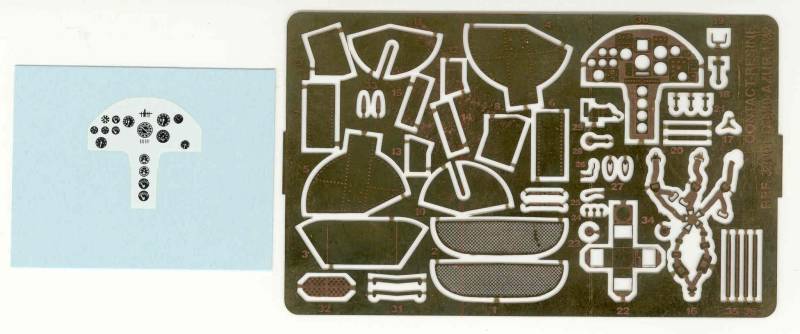
And in a never ending quest for yet more detail I acquired the Yahu PE instrument panel which is way better looking than any of the above and needs no painting, and just one piece to assemble.
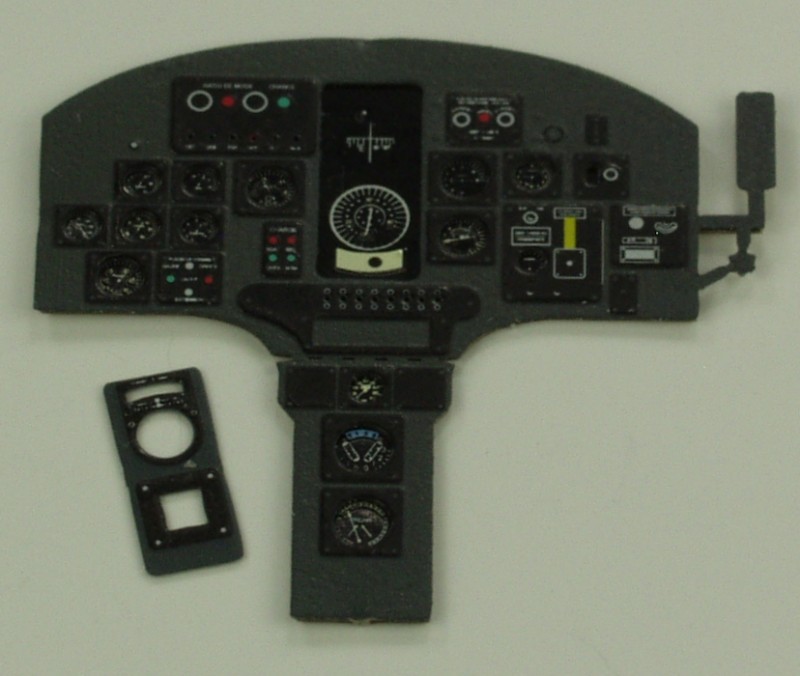
Conclusions
French aircraft from World War II have long been ignored by manufacturers and it's nice that we now have several in 1/32 scale. This kit is a nicely done short run style kit and as most of these in this category have gotten much better in the past few years, they do still require taking your time and test fitting everything before you apply glue. There are some fit issues with this kit and I highly recommend reading the build link shown below before you tackle the kit. No rocket science required but it's always better to go in knowing where the problems are. I suspect that most folks will be perfectly happy with this kit right from the box and if resin parts are a deal breaker look for the non "High Tech" kit. For those wishing to go above and beyond the Contact Resine set provides the means to do so albeit for a premium price.
Links to kit build or reviews
An in box review can be found here, and a build here.
References
Warplanes of the Second World War, Fighters volume one by William Green.
Back to the 1/32 Scale French Aircraft page